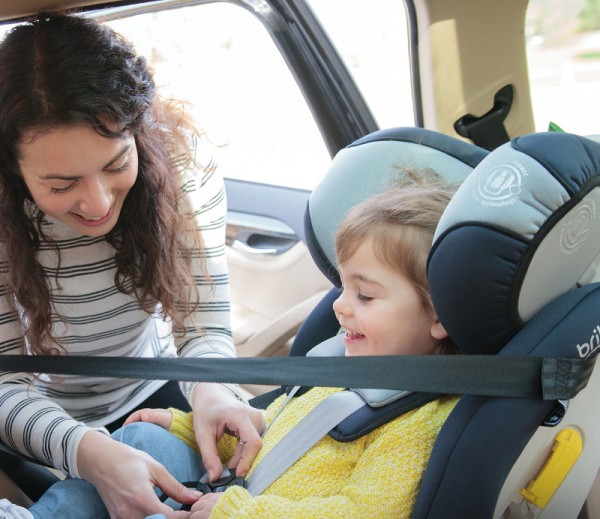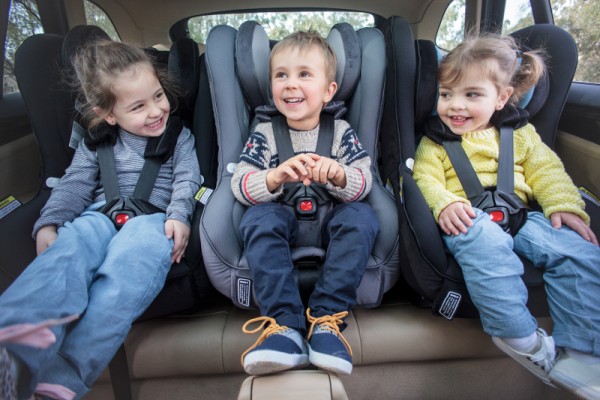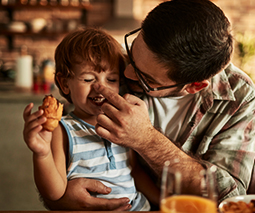Car seat safety – common mistakes many parents make

If the very thought of fitting or adjusting a baby car seat fills you with fear, you’re certainly not alone. While you don’t need a degree in physics to get it right, there are quite a few common mistakes that many parents make when using child car seats. Read through our list, and make sure your babies are travelling safe.
Choosing the wrong seat
It’s pretty overwhelming to be faced with a wall of car seats and have no idea which one is appropriate for your child. You need to take a look at the manufacturer’s instructions – they will detail if the seat is appropriate for a newborn, toddler or older child. You also need to make sure the seat meets Australian safety standards – check with your retailer.

Progressing to the wrong seat
Don’t make the mistake of moving your child to the next size car seat based solely on their age. Not every four-year-old weighs the same, or is the same height. Make sure your child fits within the shoulder height marker on the car seat, as per the manufacturer’s instructions. Remember that in Australia, children are required to travel in an appropriate restraint until they are seven.

Moving your child to forward-facing too early
While there is a general guide based on age that indicates when babies can be put into forward-facing seats, it doesn’t mean your child will be ready at that age.
Generally:
- Babies under six months must use a rear-facing car seat.
- Children aged between six months and four years may use either a rear-facing car seat or a forward-facing car seat.
- Children aged four years to about seven years must be in a forward-facing car seat or booster seat.
Rather than solely relying on your child’s age, you also need to be guided by their shoulder height. If your baby’s shoulder is in line with or above the forward-facing height marker, they can then progress to forward facing. Once your child is forward-facing they should travel in that seat until their shoulders are above the upper shoulder height marker. Seated torso height is the most important measure.

Placement of the car seat
Obviously, we want to install our children’s car seats in the safest spot in the car. That’s the middle position, because it protects your child from side impacts. If this isn’t an option, go for the rear passenger side of your vehicle. Obviously you should always make sure you put the seat where there are appropriate anchor points.
Incorrect installation
Like with anything in this modern era, if something is too difficult, you can always outsource! The same goes for car seat installation – particularly because this is one thing you don’t want to get wrong. The seat needs to be installed so there is very little give either way, and it also has to be at the correct angle so that your baby’s head is in the right position.
If you’re concerned that you won’t be able to tether the seat properly, or tightly enough – or you simply have no idea what you’re doing, seek out an accredited installer. Most car seat retailers will have accredited installer who can install your car seat when you buy it.

Flying blind
Once your car seat is installed, you still need to learn a few things about it. You need to practise adjusting the straps and harness before your baby comes home. This isn’t something you want to be learning in the hospital car park!
Buying second-hand
We do not recommend buying safety second hand. If you do, you must be very careful. Here are just a few crucial things to check before you trust it with your baby’s life:
- It must meet Australian standards – look for the sticker that shows it meets the AS/NZS 1754 standard.
- It’s illegal to use an overseas car seat model in Australia.
- Ask if the seat was in an accident, as any seats that have been involved in a crash should be destroyed, even if they appear to be fine. (Britax has a Crash Exchange Program offering a new for old replacement if your child car seat is involved in a crash).
- Do not buy a second-hand car seat that’s more than 10 years old.
There is a huge amount to consider when purchasing, installing and using a car seat, but you are toting some rather precious cargo – so it’s worth getting it right. More questions? Here’s some more information on child restraints and safety.
(This is a sponsored post for Britax Safe-n-Sound)









